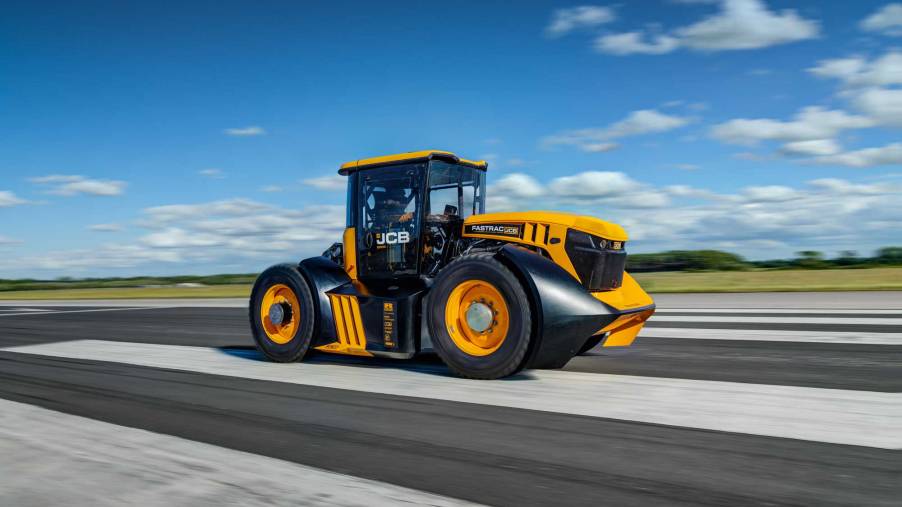
The World’s Fastest Tractor Just Hit 103 MPH
The world’s fastest tractors have set a blazing pace over the last several years, and the record has been broken once again. Topping out at more than 100 mph, the world’s fastest tractor produces over 1,000 hp and nearly 2,000 lb-ft of torque. A 7.2-liter six-cylinder diesel engine powers the gargantuan record-breaking machine.
Tractor racing has been a sport for decades, leaving many great engineering minds to find the optimal methods of increasing efficiency, increase powerplant output, and deliver more torque without breaking traction.
How Can A Tractor Reach 103 MPH?
The JCB tractor isn’t just powerful—Williams F1 (yes, a Formula 1 team) designed the aerodynamic body modifications for the world’s fastest tractor. Using specially shaped body panels to redirect wind flow allowed engineers to keep the tractor stable and grounding while it sprints to the 100-mph mark and beyond.
This engineering feat was not designed by someone in a secret engineering bunker, however. The Chairman of JCB, Lord Bamford, came up with the idea himself:
We’ve long harbored a dream to attempt a speed record with the Fastrac and the whole team has worked tirelessly to achieve this amazing result.
Though the engineering spectacle is slightly outlandish to many car enthusiasts, it is important to remember that Lamborghini started out building tractors. Also, why not? It’s fun.
What Other Ridiculous Speed Records Are Breaking?
Honda has set its sights on the world’s fastest lawnmower speed record once again. The Honda engineering team decided to put a liter sportbike engine and six-speed paddle-shift gearbox on a lawnmower. The result? A mower that reaches 100 mph faster than a 2019 Acura NSX. Typically, you wouldn’t think a supercar would lose to a lawnmower.
What Kind Of Transmission Gets the JCB Moving?
A six-speed manual truck-spec transmission ensures that this farm animal puts the power to the ground reliably. This agile tractor is based on the JCB FasTrac 4000 and 8000 series, though you would never be able to get a standard FasTrac to exceed 100 mph.
Has The Engine Been Modified?
The JCB rig has received substantial modifications to its engine, body, and other core components. Engine modifications include connecting rod replacement and upgrades, an electronically controlled supercharger and a turbo. The supercharger kicks in at low RPMs, then stops once the turbo has spooled, providing minimal turbo lag and optimal efficiency.
In addition to these modifications, a common rail fuel system with upgraded injectors and upgraded core engine components allows the heart of this beast to change its output according to what is needed in the moment. The record-breaking run was achieved with the engine tuned down to around 500 horsepower and substantially increased torque.
Does This Tractor Use a FasTrac 4000 or 8000 series rear-end?
The rear axle actually comes from the FasTrac 2000. The specific axle used is no longer in production, meaning it would be hard for anyone to recreate this machine. The team behind the fastest tractor used an older rear-end because they needed a solid axle, something which would distribute all power to the rear tires equally.
There is no rear differential, which means that both rear tires turn at exactly the same rate—making this behemoth turn like a boat. Acceleration and launch consistency, however, are greatly improved as a result of the solid axle design.
While the world’s fastest tractor is sizeable, do not be fooled, it broke the previous world tractor speed record by more than 16 mph—a 14% increase over the Top Gear record of 86.6 mph.
All images provided by the manufacturer unless otherwise noted.


